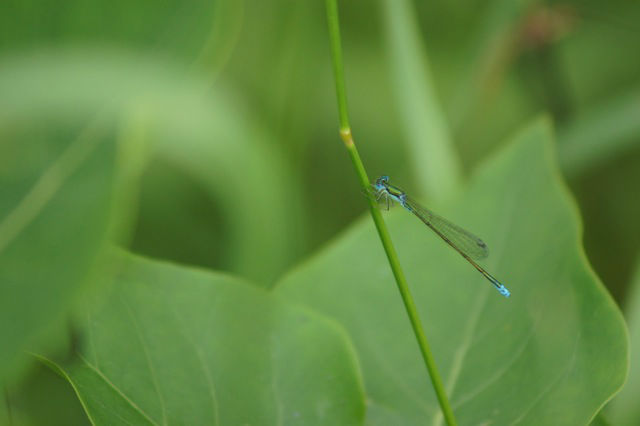
Bitter winds blow across a frozen landscape, but under the ice hide the jewels of summer.
Even during an Arctic cold snap, many quick-flowing and spring-fed rivers and streams maintain an open channel of current. This meandering passage often follows the deepest channel of the riverbed, usually with the swiftest flow. The input of relatively warm groundwater may help prevent ice formation, as does the constant churning of molecules. Even the still waters of lakes and ponds remain liquid below, insulated by the layer of less-dense ice floating on top.
Except for the ice fishermen’s prey, we often forget that anything lives in the dark depths below the ice and chilly water. But crawling around on the river bottoms are some of the most grotesque, fearsome, and ancient predators you may ever encounter. Come summer they will emerge from the depths, shed their outer shells, and take flight as shimmering-winged dragonflies.
Most dragonfly species do not overwinter as adults. Common green darners are an impressive exception, as they fly more than a those and miles to Mexico or Florida with other “snowbirds”. A few species overwinter as eggs, frozen neatly into the stems of aquatic plants. But most spend the winter hidden under the ice on our lakes and streams as nymphs.
Nymphs are the immature stage of insects that go through gradual or “incomplete” metamorphosis. Dragonfly nymphs shed their skin several times as they grow through stages until finally they emerge as a flying adult.
Dragonfly nymphs may spend anywhere from four weeks to several years in growth stages. The cooler and shorter the summers are where they live, the longer it takes. In the meantime, they rule the river bottom as fierce predators.
If they survive the winter, dragonfly nymphs will use the abundance of spring and summer to continue growing through their required eight to seventeen growth stages (depending on the species) before their final mutation into adulthood. The metamorphosis is astounding. From a split down the back of a scraggly, brown, bottom-feeder emerges a colorful, fairy-like being with delicate, dexterous wings.
Their beauty belies the power they retain as a predator. Separate muscles control each wing, and enable dragonflies to swoop acrobatically, move straight up or down, fly backwards, stop and hover, and make hairpin turns – all at full speed or in slow motion.
Huge eyes take in a 360 degree view and allow them to lock onto a moving target, judge its trajectory, and intercept it – with a 95% success rate. Dragonflies’ spiky legs, a relic from their previous life as a water monster, form a net to snag prey on the wing. Those prey include our old friends the mosquitoes.
The Dragonflies are hidden right now, creeping along the river bottoms and lake beds beneath the ice. They are waiting just as we are – lying low until they can tear off their heavy shells and bask in the warmth of the sun.
Adapted Naturalist/Educator at the Cable Natural History Museum from article by Emily Stone.

